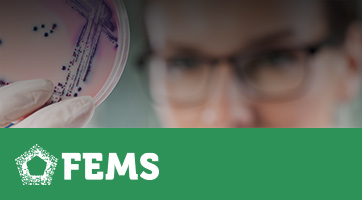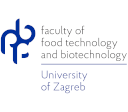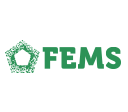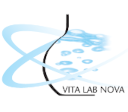Programme
Monday, 15.05.2023.
| Arrival of participants and accomodation | |||||
| 14.00 | – | 15.00 | Registration of participants | ||
| 15.00 | – | 15.30 | Opening ceremony | ||
| 15.30 | – | 16.05 | IL | 1 | D. Mattanovich (Austria): CO2 capture and conversion to base chemicals by engineered autotrophic yeast |
| 16.05 | – | 16.40 | IL | 2 | I. Matić (France): rRNA operon multiplicity as a bacterial genome stability insurance policy |
| 16.40 | – | 17.00 | Coffee break |
| Session I: Microbes in the laboratory Chairpersons: Robert Kourist, Branka Vasiljević |
|||||
| 17.00 | – | 17.35 | IL | 3 | A. Sibirny (Ukraine): Non-conventional yeasts for biofuels and high-value chemicals |
| 17.35 | – | 18.10 | IL | 4 | B. Vasiljević (Serbia): Effect of free fatty acids on Streptomyces |
| 18.10 | – | 18.30 | OP | 1 | T. Márquez (Austria): Secondary metabolites from mono- and co-cultures of bacteria associated with the freshwater bryozoan Cristatella mucedo |
| 18.30 | – | 18.50 | OP | 2 | P. Shetty (Hungary): Impact of algal-bacterial co-cultivation on algal biomass and biohydrogen production |
| 18.50 | – | 19.10 | OP | 3 | M. Miloloža (Croatia): Comparison of bioremediation strategies for the biodegradation of microplastics by bacteria and yeast |
| 20.00 | Welcome Reception | ||||
Tuesday, 16.05.2023.
| 8.00 | – | 9.00 | Registration of participants |
| Session II: Microbes in the factory Chairpersons: Colin Harwood, Diethard Mattanovich |
|||||
| 9.00 | – | 9.35 | IL | 5 | R. Kourist (Austria): Enzyme discovery and protein engineering for the synthesis of new biobased polymers |
| 9.35 | – | 10.10 | IL | 6 | C. Harwood (United Kingdom): Optimising Bacillus subtilis for industrial enzyme production |
| 10.10 | – | 10.30 | OP | 4 | M. Zugan (Slovenia): The potential of new Paraburkholderia sp. isolates for upcycling lignin from invasive plant species |
| 10.30 | – | 10.50 | Coffee break | ||
| 10.50 | – | 11.25 | IL | 7 | H. Pichler (Austria): Yeast sterol engineering |
| 11.25 | – | 12.00 | IL | 8 | N. Čadež (Slovenia): Genomic Adaptations of Saccharomyces Yeasts to Brewing Environments |
| 12.00 | – | 12.20 | OP | 5 | O. Schneider (Austria): Genome mining of Streptomyces sp. S4.7 for meroterpenoids and prenylated phenazines |
| 12.20 | – | 12.40 | OP | 6 | J. Ruchala (Poland): Yeasts as biotechnological producers of bacterial antibiotics roseoflavin and aminoriboflavin |
| 12.40 | – | 13.00 | OP | 7 | Q.D. Nguyen (Hungary): New approach for development of artificial microbial consortium for biological pretreatment of lignocellulosic biomass |
| 13.00 | – | 15.00 | Lunch break (optional) | ||
| 15.00 | – | 17.00 | Tribune “Microbes in cheese and wine production” (Suppored by: Agrolaguna) Chairperson: Mirna Mrkonjić Fuka |
||
| 15.00 | – | 15.15 | TL | 1 | N. Mikulec (Croatia): The potential of microencapsulation in cheese production |
| 15.15 | – | 15.30 | TL | 2 | J. Burtscher (Austria): Prevention of late blowing in cheese |
| 15.30 | – | 15.45 | TL | 3 | S. Radeka (Croatia): Influence of maceration time and temperature on bioactive compounds and antioxidant capacity in Malvazija istarska and Teran wines |
| 15.45 | – | 16.00 | TL | 4 | I. Lukić (Croatia): Influence of non-Saccharomyces yeasts on chemical and sensory characteristics of Malvazija istarska white wine with the emphasis on volatile esters as revealed by comprehensive two-dimensional gas chromatography |
| 16.00 | – | 16.20 | Coffee break | ||
| 16.20 | – | 20.00 | Poster session | ||
Wednesday, 17.05.2023.
| Session III: Microbes in the environment Chairpersons: Maja Rupnik, Nikolina Udiković Kolić |
|||||
| 9.00 | – | 9.35 | IL | 9 | G. Maróti (Hungary): Exploitation of interkingdom microbial interactions in bioenergy generation |
| 9.35 | – | 9.55 | OP | 8 | I. Dimkić (Serbia): Differential abundance analysis of “core” bacteriobiota during key growth stages of maize |
| 9.55 | – | 10.15 | OP | 9 | I. Babić (Croatia): Assessing the health of the marine environment by tracking a complex network of microbial communities in sediment |
| 10.15 | – | 10.35 | OP | 10 | A. Puljko (Croatia): Extended-spectrum ß-lactamase- and carbapenemase-producing Enterobacterales in hospital wastewater in Croatia |
| 10.35 | – | 11.00 | Coffee break | ||
| 11.00 | – | 11.20 | OP | 11 | S. Kajić (Croatia): Phylogenetic analysis of indigenous rhizobial strains nodulating soybean (Glycine max L.) and their symbiotic efficiency under drought conditions |
| 11.20 | – | 11.40 | SL | 1 | Gold sponsor presentation – L. Markulin (Labena, Croatia) eDNA Detection: A Powerful Tool for Monitoring Microbes in the Environment |
| 11.40 | – | 12.00 | OP | 12 | M. Rusková (Slovakia) Analysis of microbial community and specific resistance genes of the microplastics, water and surroundings of Danube River |
| 12.00 | – | 14.00 | Lunch break (optional) | ||
| 15.00 | – | 23.00 | Excursion with dinner (optional) | ||
Thursday, 18.05.2023.
| Session IV: Microbes in the human body Chairpersons: Roberto Antolović, Aleš Lapanje |
|||||
| 9.00 | – | 9.35 | IL | 10 | S. Friant (France): Humanization of yeast Saccharomyces cerevisiae to study human proteins and rare genetic disease patient mutations |
| 9.35 | – | 10.10 | IL | 11 | P. Olejníková (Slovakia): Microbial resistance is a Hot Topic – Are we able to slow down the adaptation process of microbial cells and thereby combat the increasing resistance phenomena? |
| 10.10 | – | 10.30 | OP | 13 | H. Bujdakova (Slovakia): Antimicrobial photodynamic inactivation – a promising approach to killing infectious pathogens |
| 10.30 | – | 10.50 | OP | 14 | A. Mahnic (Slovenia): Microbiome patterns and biomarker discovery in Clostridioides difficile infection: insights from human cohorts and in vitro models |
| 10.50 | – | 11.10 | Coffee break | ||
| Session V: Microbes in the computer Chairperson: Bojan Žunar |
|||||
| 11.10 | – | 11.45 | IL | 12 | M. Shintani (Japan): Behaviors of plasmids in different natural environments |
| 11.45 | – | 12.05 | OP | 15 | D. Balázs (Hungary): Structure-activity relationships of Trichoderma peptaibols – a crucial step towards practical applications |
| 12.05 | – | 12.25 | OP | 16 | A. Colautti (Italy): Whole genome sequencing and machine learning assisted study to understand diffusion dynamics of Legionella pneumophila in a local area |
| 12.30 | Closing words | ||||















